Abstract
The capacities of indole-3-acetic acid (IAA) and gibberellin A3 (GA3) to counteract the inhibitory effects of (2-chloroethyl) trimethylammonium chloride (CCC), 2-isopropyl-4-dimethylamino-5-methylphenyl-1-piperidinecarboxylate methyl chloride (Amo-1618), and N,N-dimethylaminosuccinamic acid (B-995) on hypocotyl elongation in light-grown cucumber (Cucumis sativus L.) seedlings were investigated. One μg of GA3 applied to the shoot tip was sufficient to completely nullify the effect of 10 μg of Amo-1618 or 25 μg of B-995 applied simultaneously to the shoot tip, and 10 μg of GA3 completely counteracted the effect of 10−3 m CCC added to the root medium. One μg of IAA counteracted the effect of 10−3 m CCC in the root medium, but IAA did not nullify the action of either Amo-1618 or B-995. Experiments were conducted using 2 growth retardants simultaneously, which indicated that Amo-1618 and CCC inhibit a common process, namely GA biosynthesis, essential to hypocotyl elongation. However, since the effect of CCC was overcome by applications of both GA and IAA, growth retardation resulting from treatment with CCC apparently is not due solely to inhibition of GA biosynthesis. B-995 did not interact additively with either Amo-1618 or CCC, which suggests that B-995 affects a process different from those affected by the other 2 retardants. Thus, while inhibition evoked by B-995 is reversible by applied GA, the action of B-995 does not appear to be inhibition of GA biosynthesis.
Full text
PDF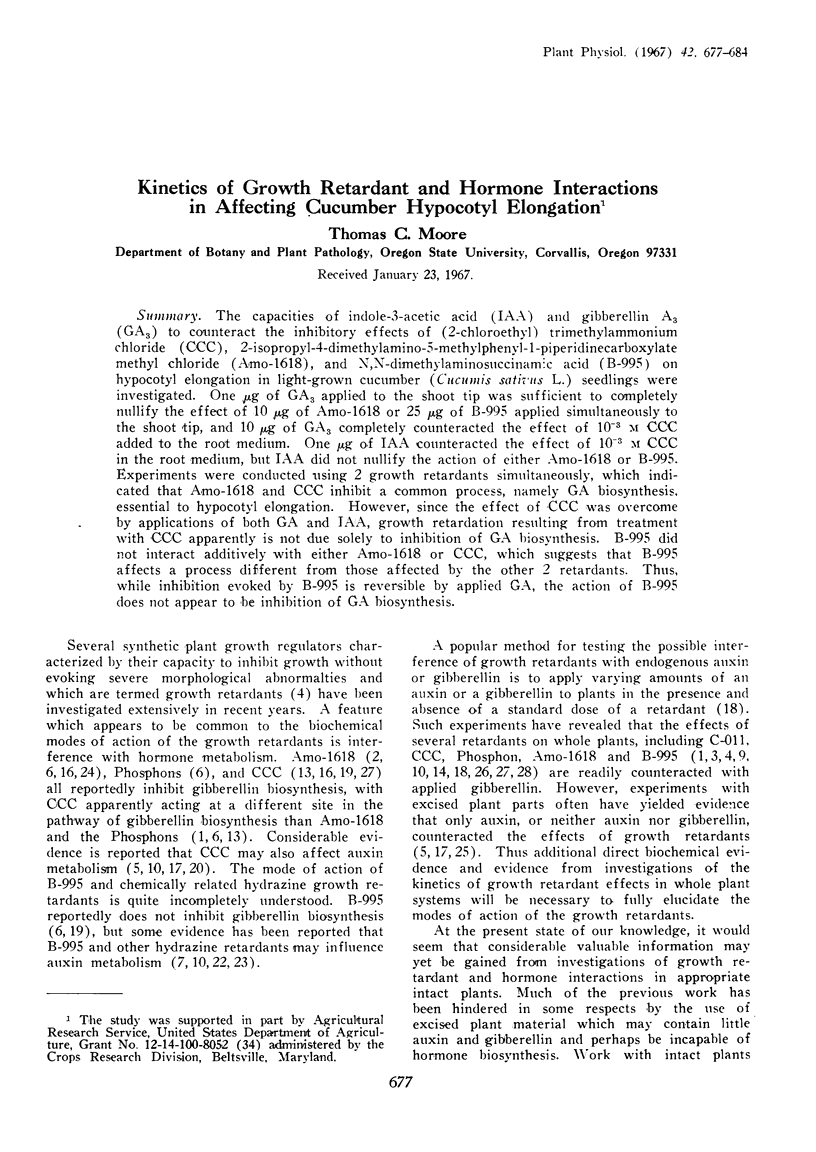
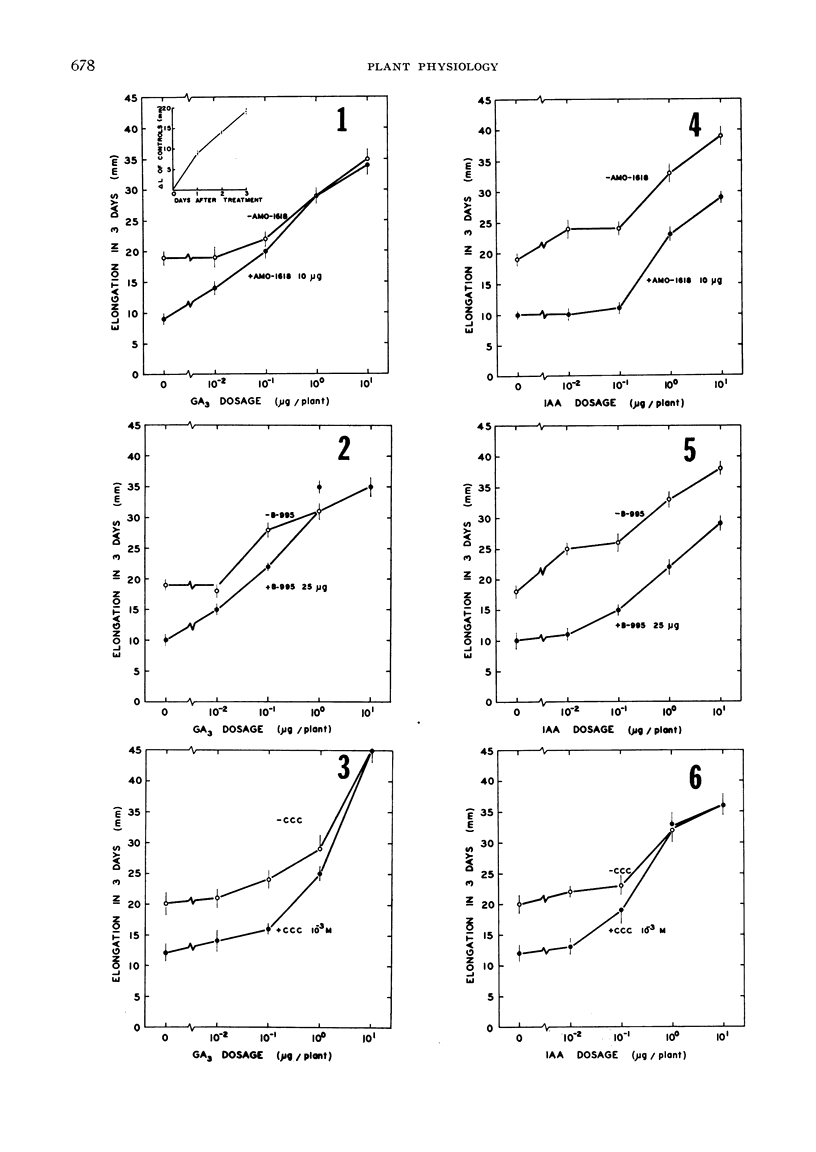
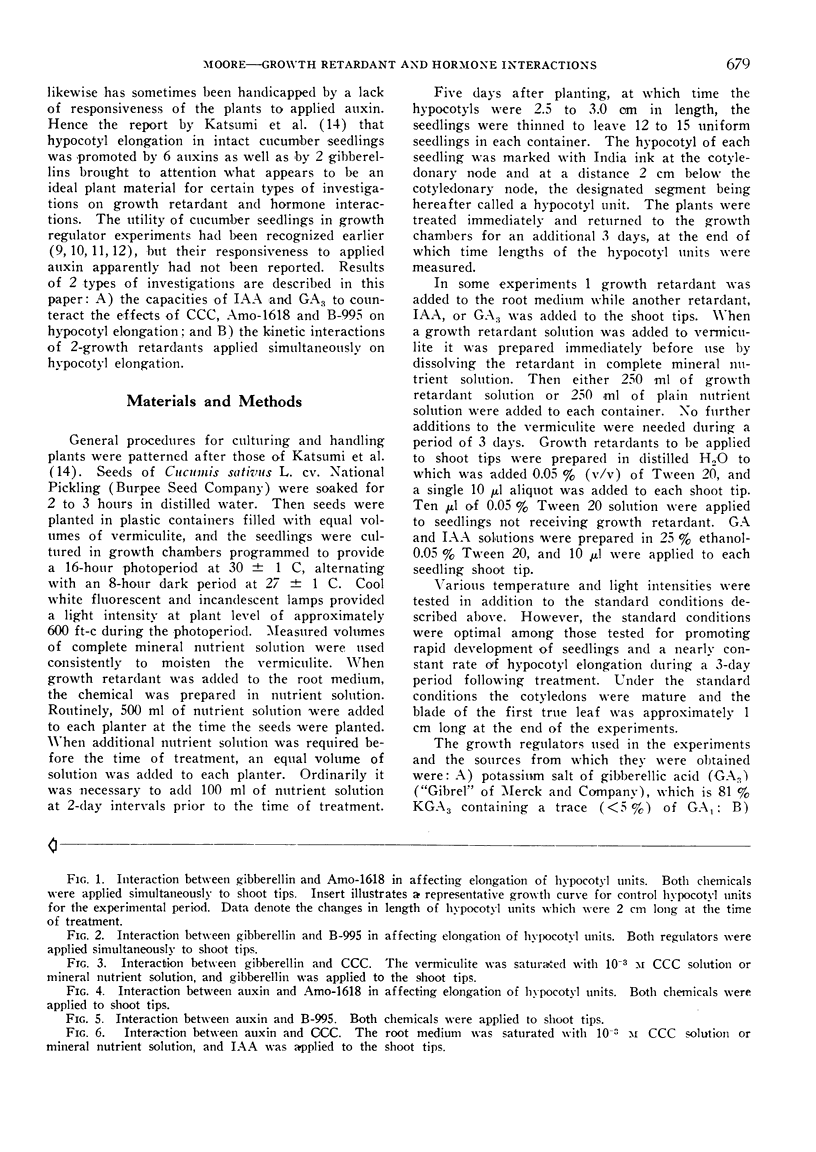
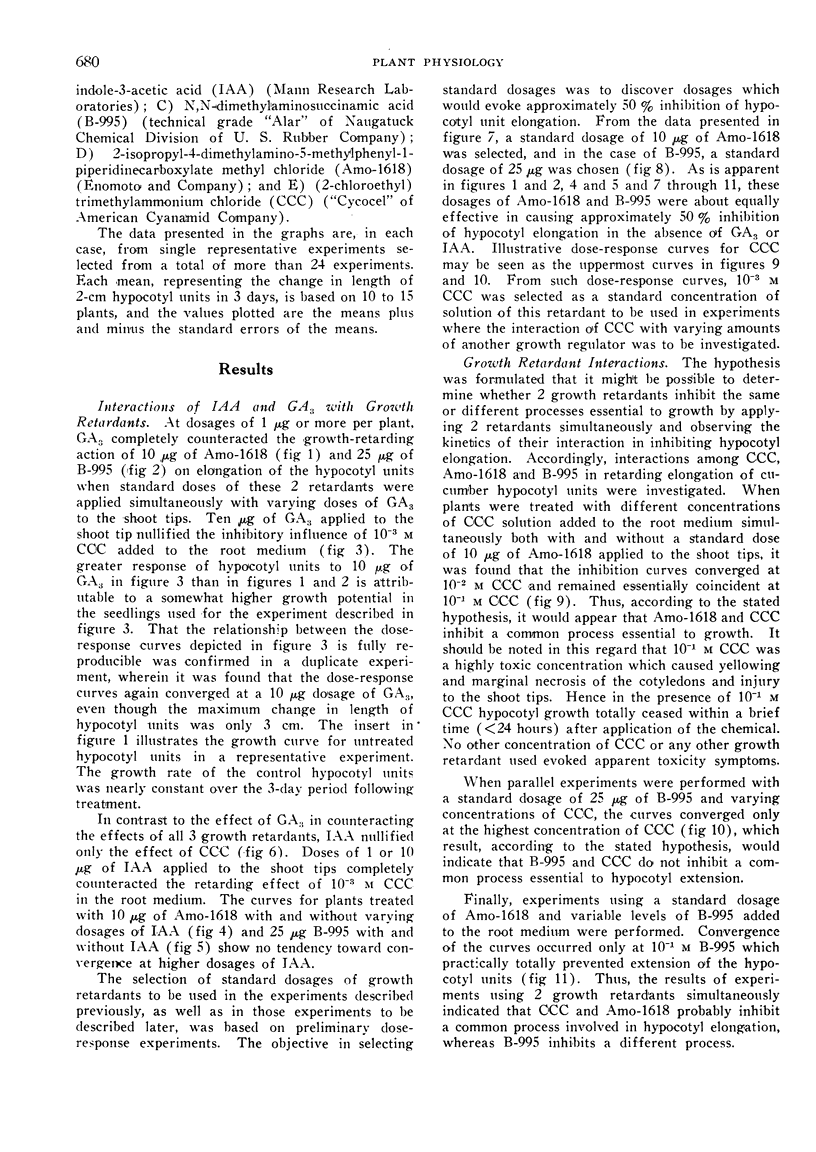
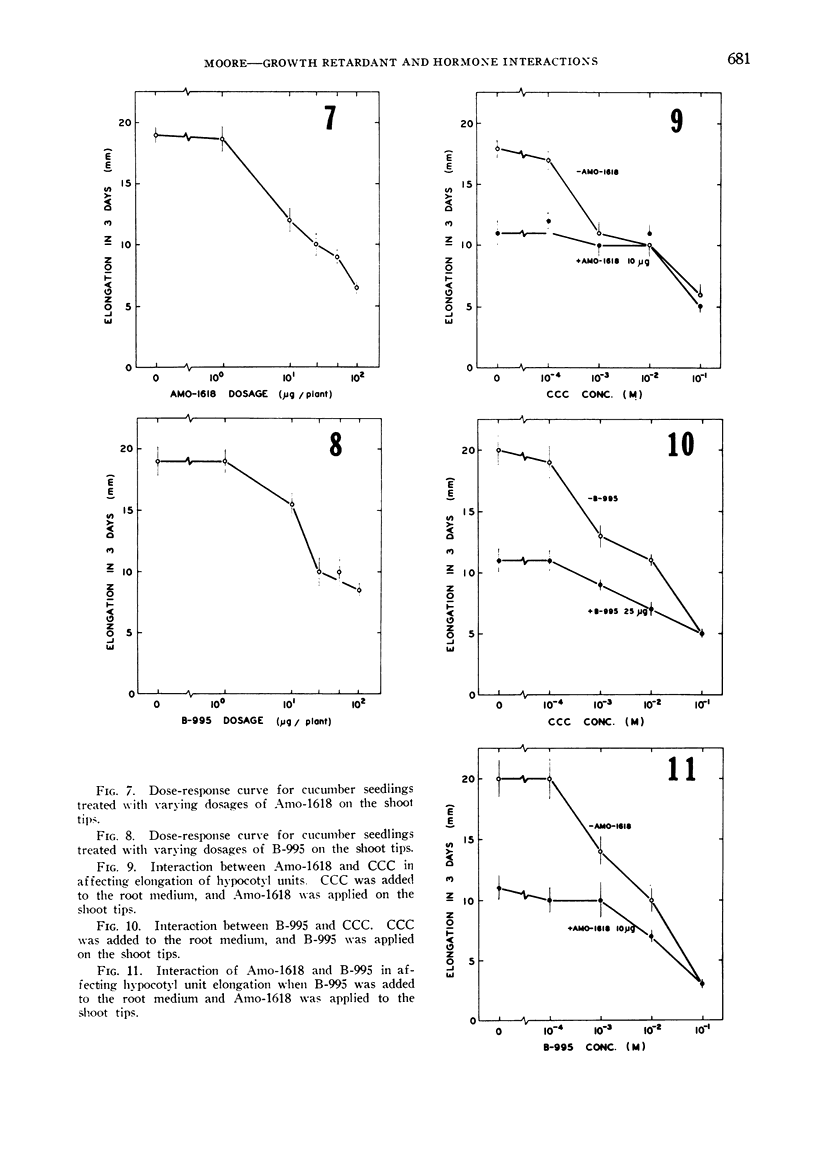
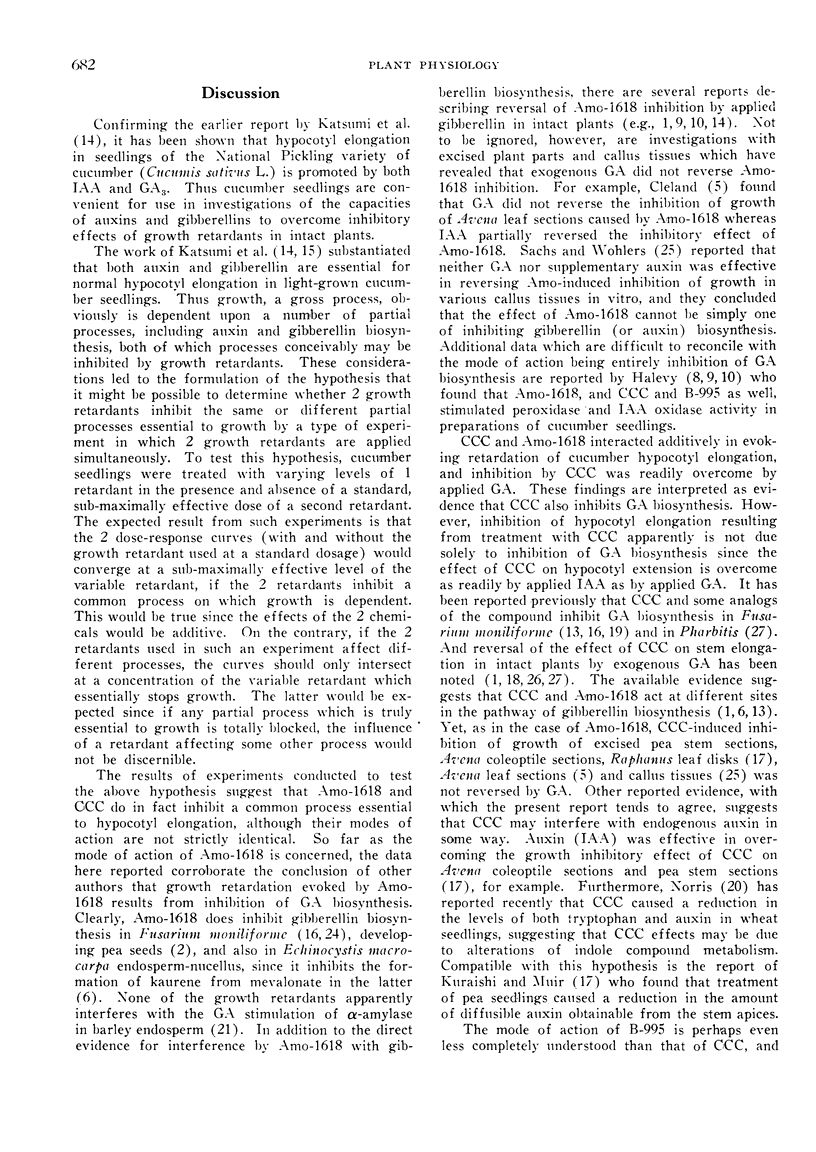
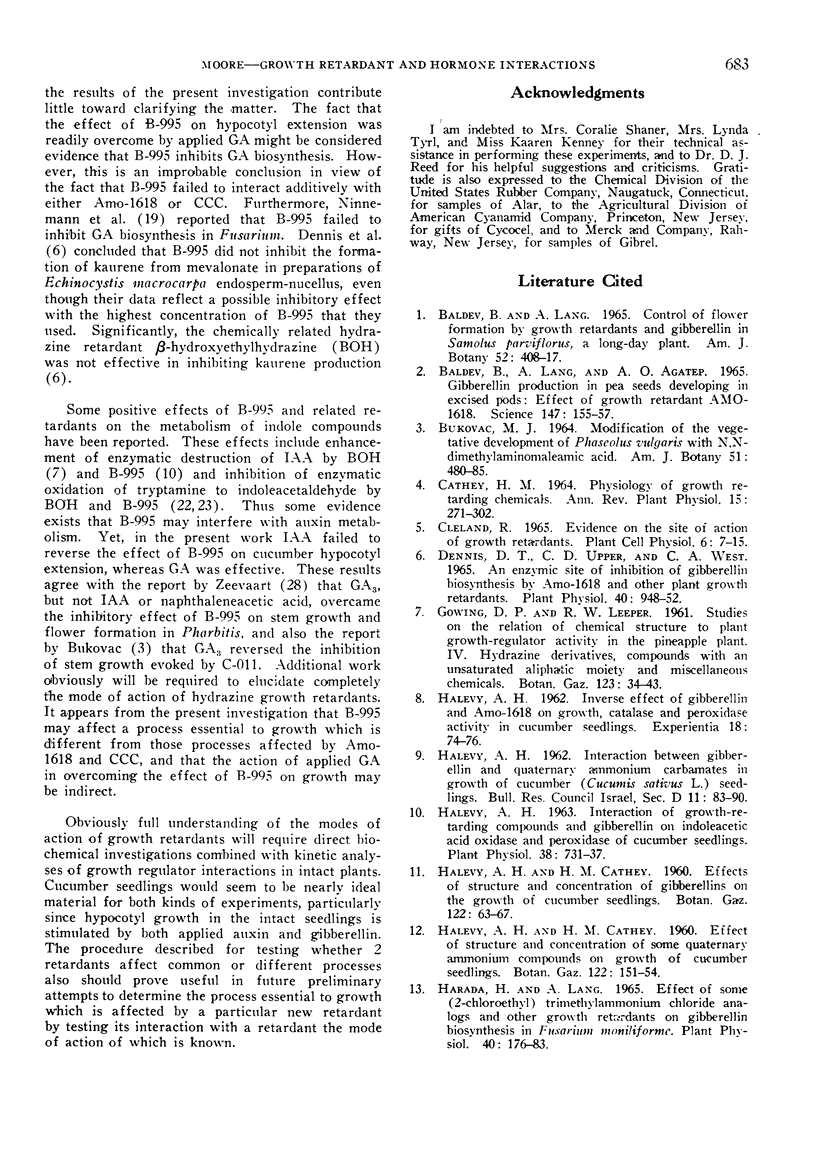
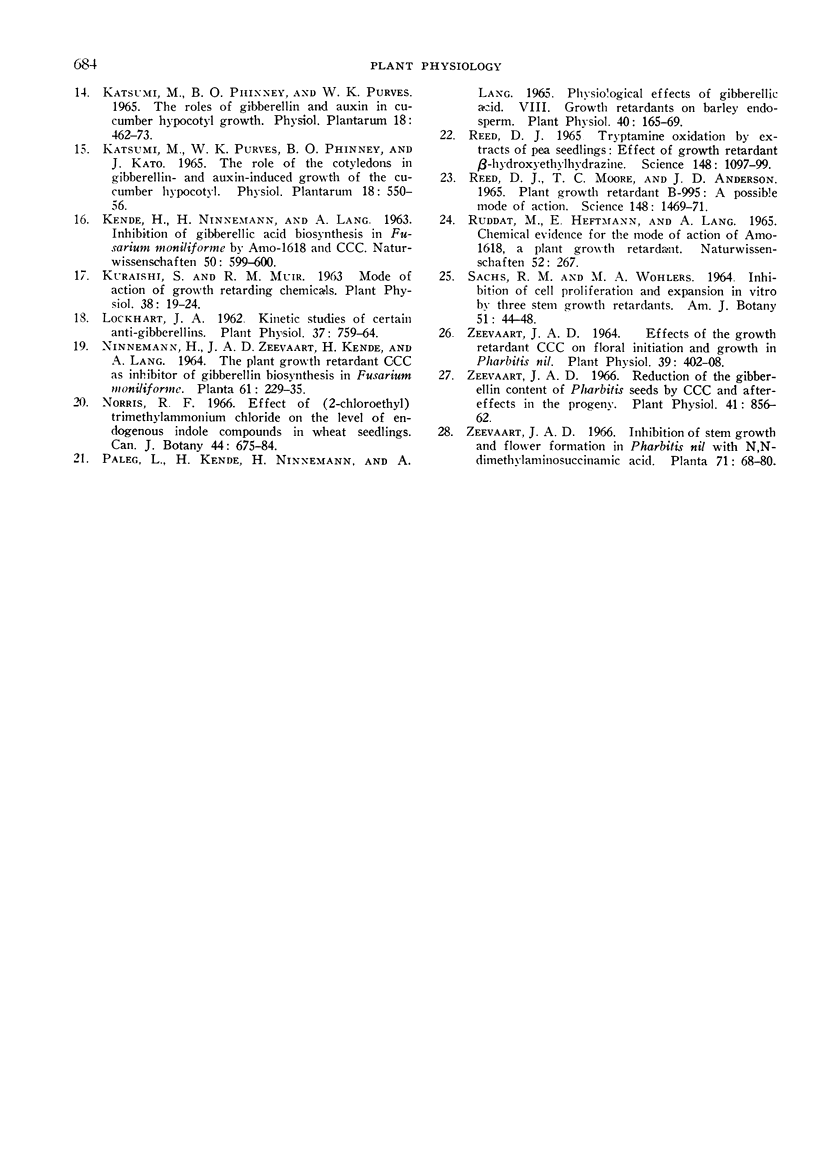
Selected References
These references are in PubMed. This may not be the complete list of references from this article.
- BALDEV B., LANG A., AGATEP A. O. GIBBERELLIN PRODUCTION IN PEA SEEDS DEVELOPING IN EXCISED PODS: EFFECT OF GROWTH RETARDANT AMO-1618. Science. 1965 Jan 8;147(3654):155–157. doi: 10.1126/science.147.3654.155. [DOI] [PubMed] [Google Scholar]
- Dennis D. T., Upper C. D., West C. A. An enzymic site of inhibition of gibberellin biosynthesis by Amo 1618 and other plant growth retardants. Plant Physiol. 1965 Sep;40(5):948–952. doi: 10.1104/pp.40.5.948. [DOI] [PMC free article] [PubMed] [Google Scholar]
- HALEVY A. H. Inverse effect of gibberellin and Amo-1618 on growth, catalase and peroxidase activity in cucumber seedlings. Experientia. 1962 Feb 15;18:74–76. doi: 10.1007/BF02138265. [DOI] [PubMed] [Google Scholar]
- Halevy A. H. Interaction of Growth-retarding Compounds and Gibberellin on Indoleacetic Acid Oxidase and Peroxidase of Cucumber Seedlings. Plant Physiol. 1963 Nov;38(6):731–737. doi: 10.1104/pp.38.6.731. [DOI] [PMC free article] [PubMed] [Google Scholar]
- Harada H., Lang A. Effect of some (2-chloroethyl) trimethylammonium chloride analogs and other growth retardants on gibberellin biosynthesis in Fusarium moniliforme. Plant Physiol. 1965 Jan;40(1):176–183. doi: 10.1104/pp.40.1.176. [DOI] [PMC free article] [PubMed] [Google Scholar]
- Kuraishi S., Muir R. M. Mode of Action of Growth Retarding Chemicals. Plant Physiol. 1963 Jan;38(1):19–24. doi: 10.1104/pp.38.1.19. [DOI] [PMC free article] [PubMed] [Google Scholar]
- Lockhart J. A. Kinetic studies of certain anti-gibberellins. Plant Physiol. 1962 Nov;37(6):759–764. doi: 10.1104/pp.37.6.759. [DOI] [PMC free article] [PubMed] [Google Scholar]
- Paleg L., Kende H., Ninnemann H., Lang A. Physiological effects of gibberellic acid. 8. Growth retardants on barley endosperm. Plant Physiol. 1965 Jan;40(1):165–169. doi: 10.1104/pp.40.1.165. [DOI] [PMC free article] [PubMed] [Google Scholar]
- REED D. J. TRYPTAMINE OXIDATION BY EXTRACTS OF PEA SEEDLINGS: EFFECT OF GROWTH RETARDANT BETA-HYDROXYETHYLHYDRAZINE. Science. 1965 May 21;148(3673):1097–1099. doi: 10.1126/science.148.3673.1097. [DOI] [PubMed] [Google Scholar]
- Reed D. J., Moore T. C., Anderson J. D. Plant Growth Retardant B-995: A Possible Mode of Action. Science. 1965 Jun 11;148(3676):1469–1471. doi: 10.1126/science.148.3676.1469. [DOI] [PubMed] [Google Scholar]
- Zeevaart J. A. Effects of the Growth Retardant CCC on Floral Initiation and Growth in Pharbitis nil. Plant Physiol. 1964 May;39(3):402–408. doi: 10.1104/pp.39.3.402. [DOI] [PMC free article] [PubMed] [Google Scholar]
- Zeevaart J. A. Reduction of the Gibberellin Content of Pharbitis Seeds by CCC and After-Effects in the Progeny. Plant Physiol. 1966 May;41(5):856–862. doi: 10.1104/pp.41.5.856. [DOI] [PMC free article] [PubMed] [Google Scholar]


